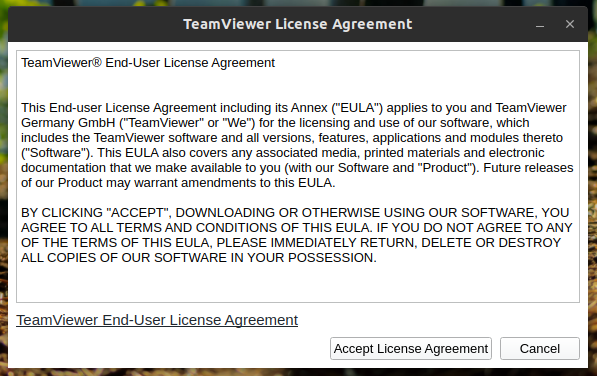
It is recommended to choose the option to compare changes and keep the original if they are still the same. Note that you may be prompted to keep the source or import the maintainer during the installation. Next, you’ll need to import the TeamViewer repository by running the following command: echo "deb stable main" | sudo tee /etc/apt//teamviewer.listĪfter importing the repository, update your APT package list to reflect the changes by running the following: sudo apt updateįinally, install TeamViewer by running the following command: sudo apt install teamviewer

You can do this by executing the following command in your terminal: curl -fSsL | sudo gpg -dearmor | sudo tee /usr/share/keyrings/teamview.gpg > /dev/null To verify the authenticity of the packages, you’ll need to import the GPG key to your keychain. Once you have updated your system and installed the required packages, you can install TeamViewer on your Ubuntu system. If you skip this step and encounter any issues during the installation, return to this step and run the command to ensure all required packages are installed. These packages are essential for adding external repositories and performing secure transfers over HTTPS. Most of these packages would already be present on your system, but running the command below can help ensure they’re installed: sudo apt install software-properties-common apt-transport-https curl ca-certificates -y Next, you’ll need to install some dependencies required for TeamViewer to work correctly.

This command will update the package list and upgrade all installed packages to their latest version. You can do this by running the following command: sudo apt update & sudo apt upgrade First, ensuring that your Ubuntu system is up-to-date with all existing packages is recommended.


 0 kommentar(er)
0 kommentar(er)
